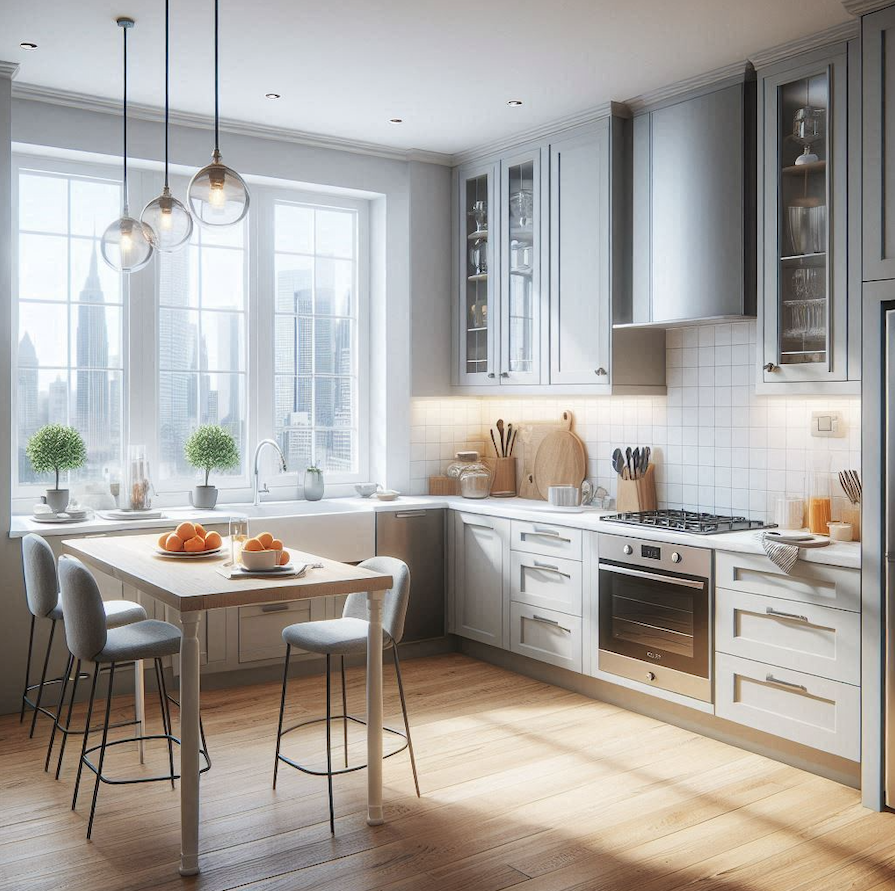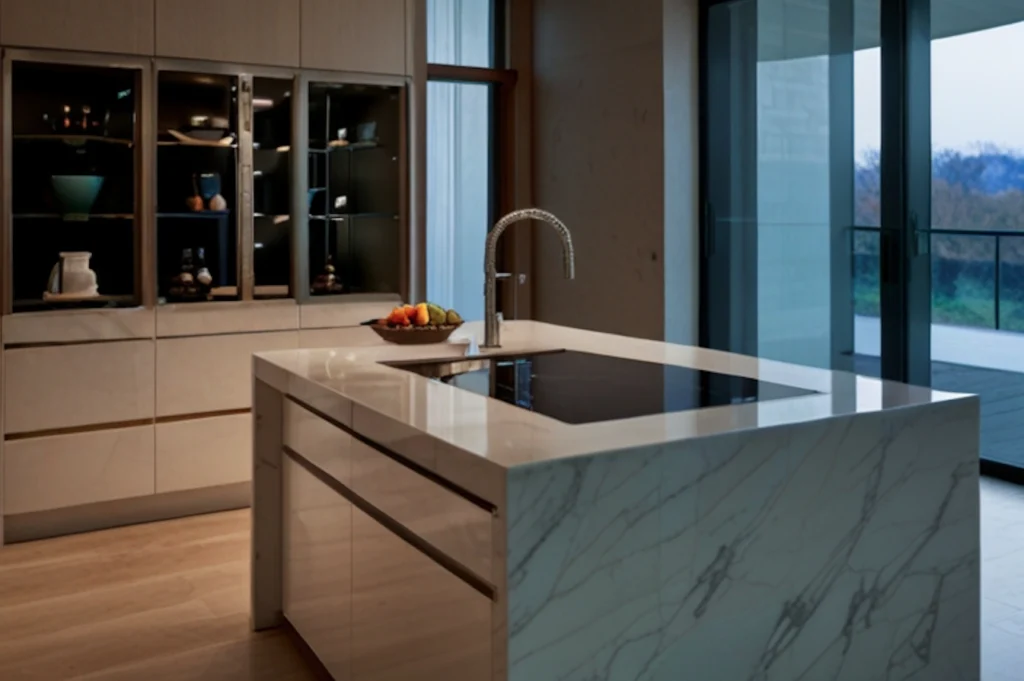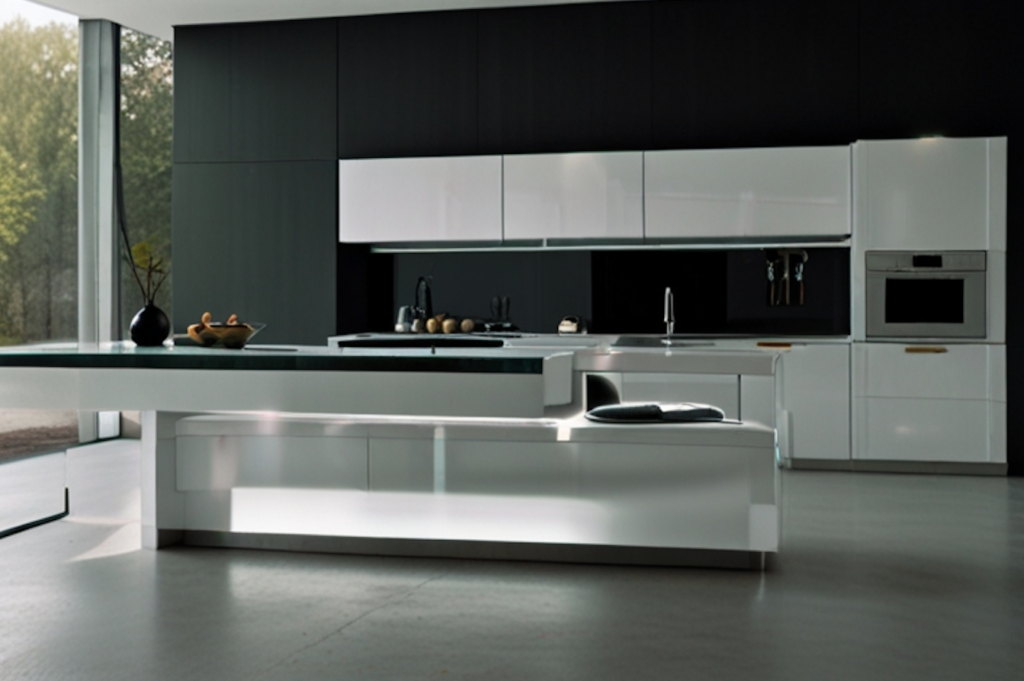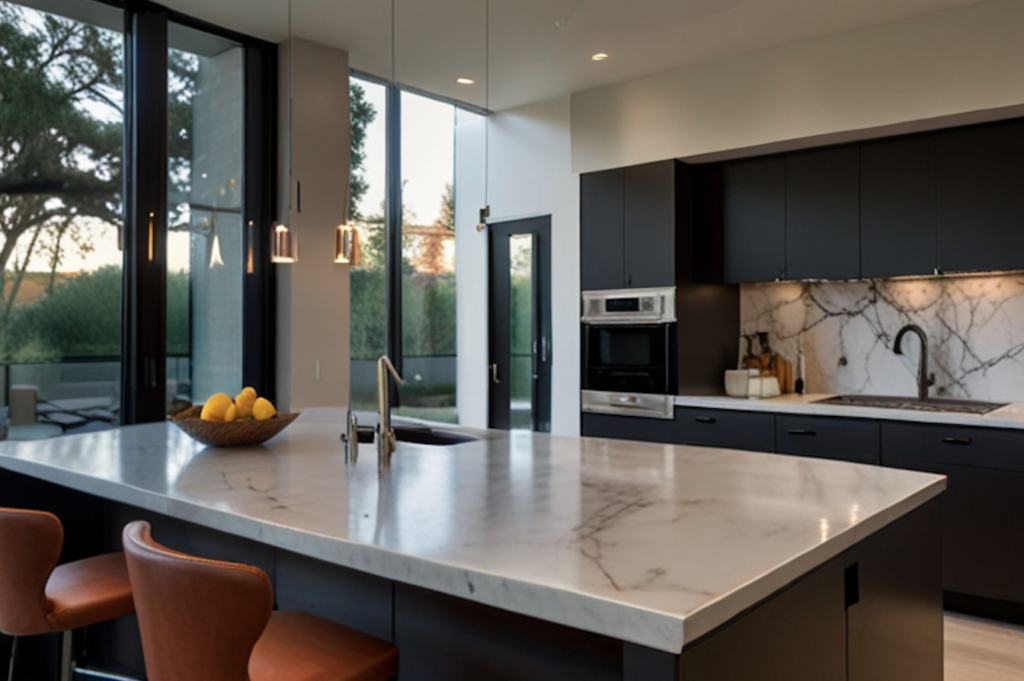The desire for natural light in our homes has become a prominent design trend, and for good reason. Natural light not only brightens a space but also enhances our mood, increases our sense of well-being, and fosters a connection with the outdoors. This is especially true in the kitchen, a room where we gather to cook, socialize, and share meals. A kitchen bathed in natural light becomes a more inviting and invigorating space, making the time spent within its walls more enjoyable.
While some kitchens may be blessed with an abundance of natural light, others might feel a bit dim and cave-like. However, fear not! There are many ways to enhance natural light in your kitchen, and one of the most impactful methods is through strategic window placement. By strategically adding new windows or modifying existing ones, you can transform your kitchen into a sun-drenched haven.
Assessing Your Kitchen and Natural Light Potential
Before diving into specific window options, it’s crucial to assess your existing kitchen layout and sun patterns throughout the day. Here are some key factors to consider:
- Existing Window Placement and Size: Take stock of the windows currently present in your kitchen. Are they small and high up on the wall, or do they offer a decent view of the outdoors? Consider their limitations in terms of bringing in natural light.
- Sun Orientation: Understanding how the sun moves across the sky throughout the day is vital. Knowing which walls receive direct sunlight in the morning, afternoon, or evening will help you determine the optimal placement for new windows.
- Surrounding Obstructions: Are there any trees, buildings, or other structures outside your kitchen windows that block sunlight? While some landscaping elements can be charming, they may also significantly reduce the amount of natural light entering the space.
- Kitchen Layout: Don’t forget to consider the flow of your kitchen. Think about where new windows might complement existing work zones and traffic patterns. You don’t want to block a crucial countertop space with a beautiful new window!
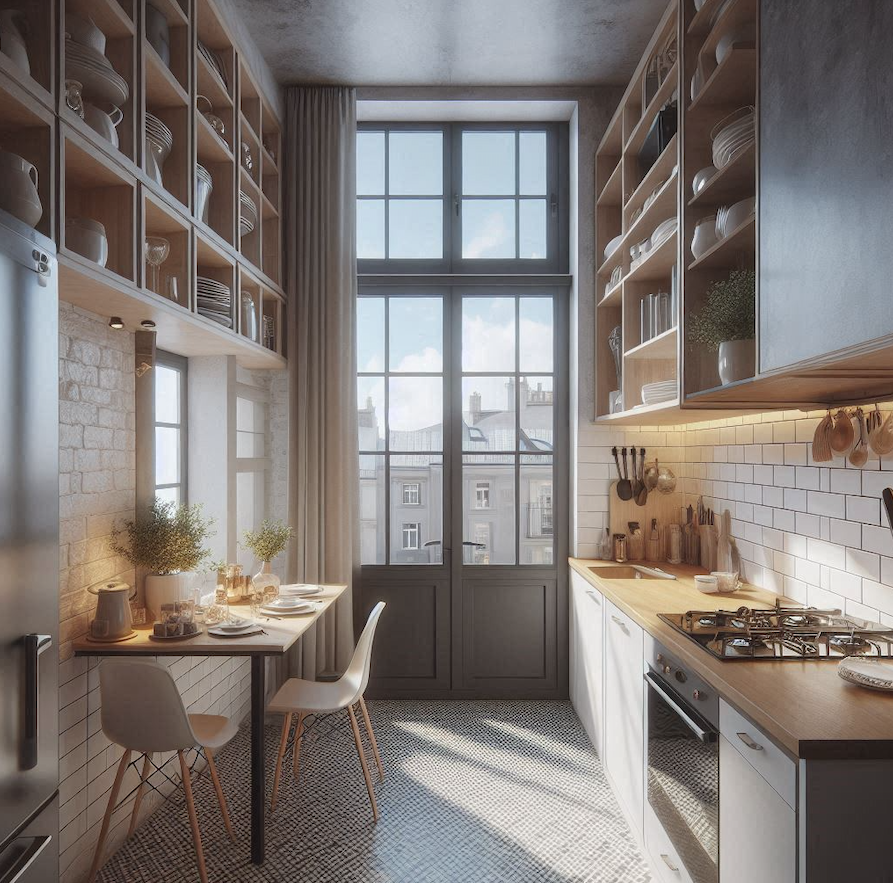
Strategic Window Options for Enhanced Natural Light
There’s no single “one-size-fits-all” solution when it comes to enhancing natural light with windows. The best approach depends on your kitchen’s layout, sun orientation, and architectural style. Here, we’ll explore some popular and effective window options to consider:
A. Floor-to-Ceiling Windows
Let’s start with a dramatic option: floor-to-ceiling windows. These expansive windows offer a truly transformative experience, bathing your kitchen in natural light from floor to ceiling.
- Benefits:
- Unobstructed Views: Floor-to-ceiling windows create a seamless connection with the outdoors, offering breathtaking views of your garden, backyard, or surrounding landscape.
- Connection with Nature: Natural light streams in, blurring the lines between indoor and outdoor spaces. This can create a more calming and invigorating atmosphere in your kitchen.
- Feeling of Spaciousness: These windows visually expand the space, making your kitchen feel larger and more airy.
- Considerations:
- Heat Gain: In warmer climates, excessive heat gain can become a concern. Consider incorporating overhangs, awnings, or heat-reflective window treatments to mitigate this.
- Privacy Concerns: Depending on the placement of your floor-to-ceiling windows and exterior landscaping, privacy might be a factor. Strategically placed planting or frosted glass sections can address this.
- Cost: Due to their size and potential need for structural modifications, floor-to-ceiling windows can be more expensive than other options.
B. Skylights and Roof Windows
For kitchens with limited wall space or a lack of suitable walls for new windows, skylights and roof windows can be brilliant solutions. These strategically placed windows bring natural light directly from above, illuminating your kitchen from a whole new perspective.
- Benefits:
- Natural Light from Above: Skylights and roof windows bypass any obstructions on surrounding walls, drawing in natural light even in interior spaces.
- Targeted Illumination: These windows can be placed strategically over work zones, providing task lighting where you need it most.
- Variety of Options: Skylights and roof windows come in a variety of shapes, sizes, and opening mechanisms, allowing you to customize the light flow and ventilation in your kitchen.
- Considerations:
- Installation Complexity: Installing skylights or roof windows can be more complex than installing wall windows, especially depending on your roof type and building codes. Consulting with a qualified contractor is crucial.
- Water Leakage: Proper installation and flashing are essential to prevent water leakage around the skylight or roof window.
- Insulation: Ensure proper insulation around the skylight or roof window to minimize heat gain or heat loss, depending on your climate.
C. Strategically Placed Windows
Don’t underestimate the power of well-placed windows! By adding windows on walls that receive direct sunlight, you can dramatically enhance the natural light in your kitchen. Here are some key considerations:
- Window Size and Placement: The size and placement of your new windows will significantly impact the amount of natural light they bring in. Consider larger windows on walls receiving direct sunlight for maximum impact.
- Sun Orientation: As mentioned earlier, understanding sun patterns is crucial. Placing windows on walls that receive morning or afternoon sunlight will optimize the light flow throughout the day in your kitchen.
- Clustered Windows: For a truly dramatic effect, consider clustering multiple windows together on a single wall. This creates a “wall of light” effect, flooding your kitchen with natural light.
- Transom Windows: If you have limited wall space above your existing cabinets, transom windows can be a clever solution. These horizontal windows installed above cabinets can bring light deeper into the room, illuminating previously dark areas.
Here are some additional benefits of strategically placed windows:
- Improved Ventilation: Openable windows allow for natural ventilation, helping to remove cooking odors and improve air circulation in your kitchen.
- Enhanced Views: Well-placed windows can offer pleasant views of your garden, backyard, or surrounding landscape, creating a more invigorating and connected atmosphere.
- Increased Visual Interest: Strategically placed windows add visual interest to your kitchen design, breaking up wall space and creating a more dynamic aesthetic.
D. Specialty Windows for Unique Design and Light Enhancement
While strategically placed windows and skylights offer a wide range of options, there’s always room for a bit of design flair. Let’s explore some specialty windows that can add both unique aesthetics and enhanced natural light to your kitchen:
- Bay Windows: These windows project outwards from the wall, creating a nook-like area in your kitchen. Bay windows offer expansive views and increased natural light from multiple angles, perfect for creating a bright and inviting breakfast nook or cozy reading corner.
- Corner Windows: Corner windows can be a great way to maximize light and views in kitchens with corner layouts. They offer a panoramic perspective of the outdoors, drawing in light from two directions.
Benefits:
- Increased Light Penetration: Both bay and corner windows offer increased surface area for natural light to enter compared to traditional flat windows.
- Added Visual Interest: These specialty windows add a unique design element to your kitchen, elevating its aesthetic appeal.
- Enhanced Views: By capturing light and views from multiple angles, these windows create a more expansive and connected feeling in your kitchen.
Considerations:
- Cost: Specialty windows can be more expensive than traditional windows due to their unique shapes and potential need for additional structural support.
- Installation Complexity: Installing bay and corner windows may require more complex framing and construction compared to standard windows. Consulting a qualified contractor is essential.
- Space Requirements: These windows project outwards from the wall, so ensure you have sufficient space in your kitchen layout to accommodate them without obstructing traffic flow.
Remember: While specialty windows offer undeniable design appeal, carefully consider their functionality in your kitchen before making a decision.
IV. Additional Considerations for Maximizing Natural Light
While strategically placed windows are a key player in boosting natural light, there are other design elements that can contribute to a brighter and more inviting kitchen. Here are some additional considerations:
- Light Shelves and Window Treatments:
- Light Shelves: These are simple yet effective shelves installed above windows. They reflect sunlight deeper into the room, illuminating areas that might not receive direct light from the window itself. Light shelves can be a great way to maximize the light-harvesting potential of your windows.
- Window Treatments: Don’t block the natural light! Opt for light-filtering curtains or blinds that allow filtered sunlight to enter the room while still providing privacy when needed. Consider sheer curtains, roller shades, or Roman shades for a light and airy feel.
- Light Shelves: These are simple yet effective shelves installed above windows. They reflect sunlight deeper into the room, illuminating areas that might not receive direct light from the window itself. Light shelves can be a great way to maximize the light-harvesting potential of your windows.
- Interior Finishes:
- Light Colors: Light-colored walls, cabinets, and countertops play a crucial role in reflecting natural light throughout the space. Opt for pale shades of white, cream, or light beige to create a bright and airy atmosphere.
- Reflective Backsplash: Consider using a reflective backsplash material like stainless steel or light-colored tiles. This will bounce light around the room, further enhancing the natural light effect.
- Artificial Lighting:
- Task Lighting: While natural light is ideal during the day, strategically placed task lighting becomes essential in the evenings. Under-cabinet lighting, pendant lights over work zones, and recessed lighting can complement natural light and create a well-lit kitchen for evening cooking and socializing.
Conclusion: A Kitchen Bathed in Natural Light Awaits
By strategically incorporating the concepts explored in this article, you can transform your kitchen into a space bathed in natural light. Natural light not only brightens your kitchen but also enhances your mood, increases your sense of well-being, and fosters a connection with the outdoors.
Remember: The key to success lies in planning and considering several factors before implementing changes.
- Assess your existing kitchen layout and sun patterns. Understanding these will guide your window placement decisions.
- Consider your budget and desired level of natural light enhancement. Different window options offer varying degrees of light penetration and come with varying costs.
- Consult with a qualified architect, contractor, or designer. They can provide professional recommendations tailored to your specific kitchen and architectural style.
By following these steps and incorporating the ideas presented here, you can create a kitchen that is not only functional and inviting, but also filled with the warmth and beauty of natural light. Imagine preparing meals, enjoying family gatherings, or simply relaxing in a kitchen that feels connected to the outdoors and vibrant with natural light. With careful planning and execution, this dream kitchen can become a reality.
We hope this article has empowered you to embark on your journey to a naturally lit kitchen!

